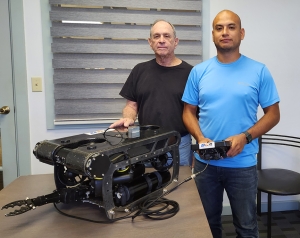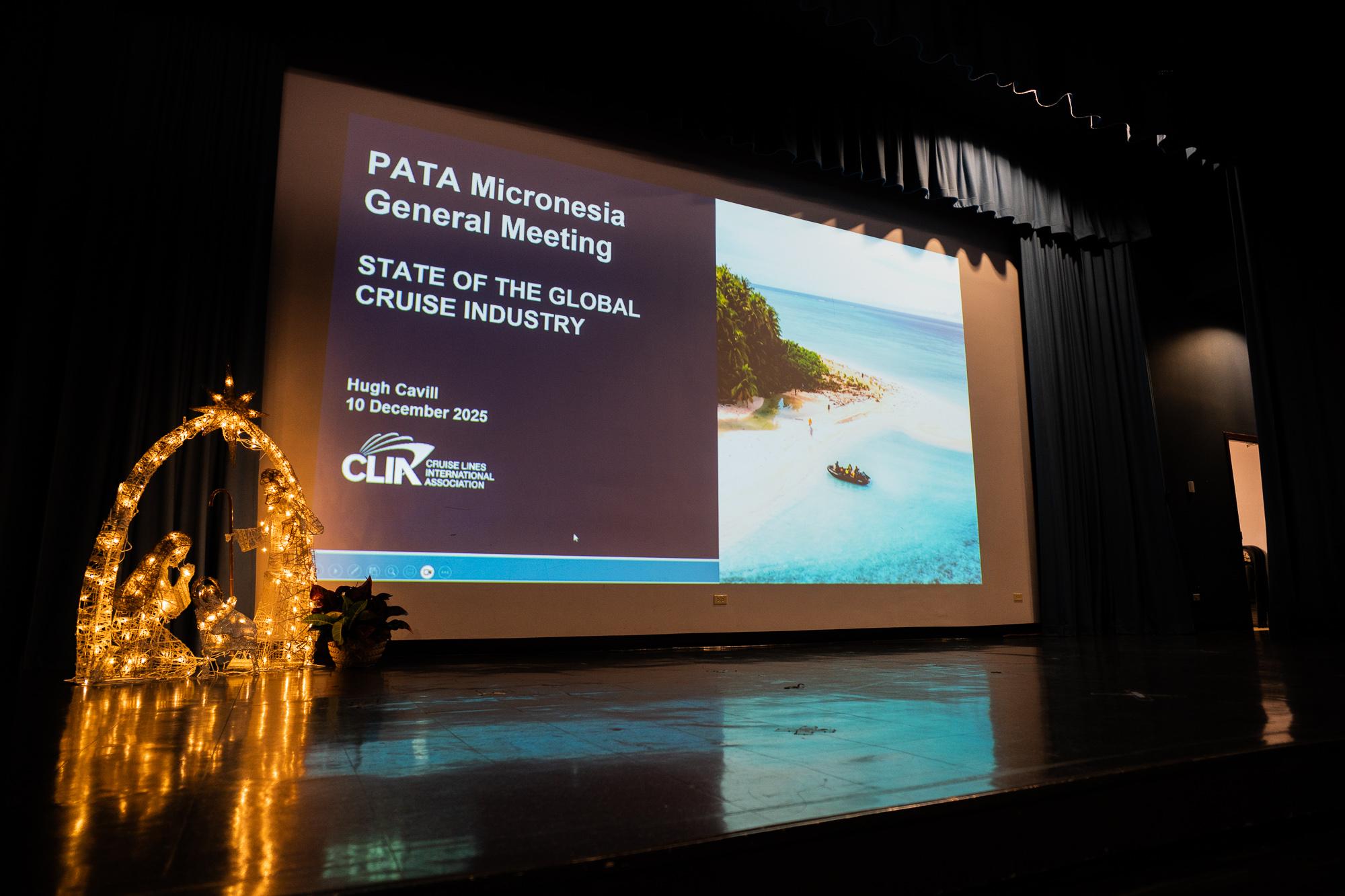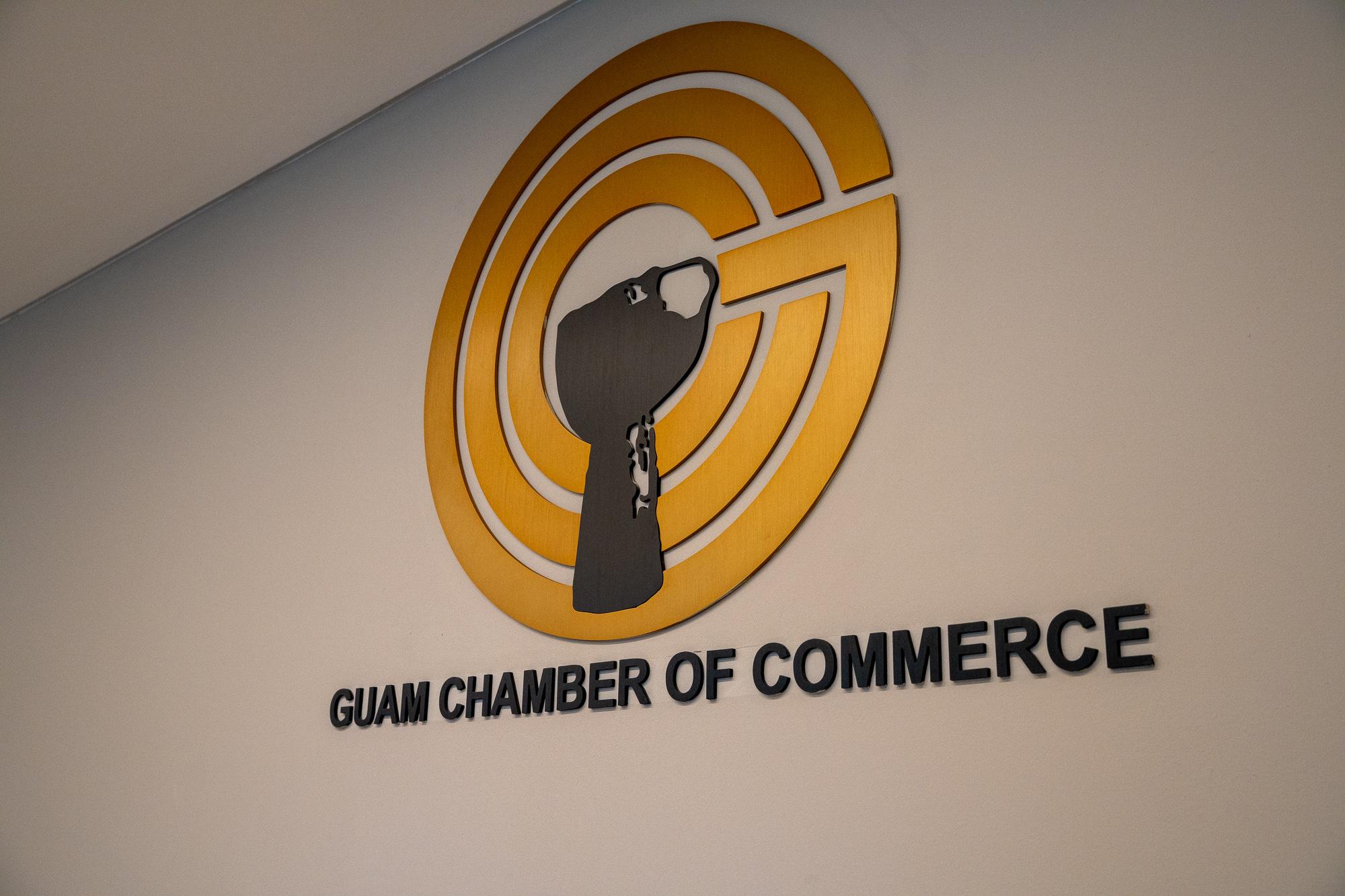BY MAUREEN. N. MARATITA
Journal Staff
Remotely operated vehicles or drones offer multiple possibilities for the world of entertainment, and leisure, or be put to use in a variety of commercial and industrial fields.
One company operating in Guam is taking the potential of ROVs and demonstrating their scope, as well as developing a workforce to pilot ROVs.
Duenas, Camacho & Associates Inc. — the engineering and consulting firm headquartered in Guam — has retained Michael J. Wilder as a contractor to do just that.
He told the Journal that the ROVs that he works with are purposeful. “These are not toys. … These are workhorses,” he said. “An individual wouldn’t buy one; they are much too expensive.” ROVs have developed in about the last decade to also offer a more manageable size and a few companies are making smaller, more versatile versions, Wilder said, but can still cost $100,000.

A Deep Trekker ROV is already working in the waters of Guam. Photo courtesy of Duenas, Camacho & Associates Inc.
Still, their utility makes them essential for certain purposes. “Anything that a diver would be doing can be done with an ROV,” Wilder said.
Submersible waterproof ROVs such as the Deep Trekker ROV Wilder uses, enable pilot technicians to explore marine and other environments remotely, and view areas with a camera and a corresponding computer screen. “It’s a very good camera,” Wilder said.
ROVs are typically tethered. “The tether is long,” Wilder said and one of 150 meters or about 300 feet is currently connected to the ROV Duenas, Camacho uses, but it has another tether. “We could put it down 500 feet,” he said.
The ROV is flexible for power sources. “Our ROV operates two ways,” he said. It can be used with a generator, or on electric power.
In a marine environment, ROVs come into their own and are used in a number of different ways.
“They’re being used to locate things on the bottom that need to be photographed or videoed,” Wilder said. His group is looking at resources on the bottom of the ocean for marine related projects.
The repairs at Agat Marina are part of the Port of Guam’s Master Plan, where Wharf B will be rebuilt, and the team was retained for that project, prior to the wharf’s construction. The wharf suffered typhoon damage in July 2014.
“We were looking at the condition of the piles,” Wilder said. The ROV traversed down the piles and around them. “The piles are in pretty good shape,” he said.
The lack of a wharf affects the number of boats that can use it, he said. “Not having that wharf eliminates one third of the boats that can berth at Agat. … All those people are somewhere else.”
There are nine piles that are being surveyed to a depth of 12 feet, he said. Surveying would reflect rust and any algae growth. “We’re also looking to see if there are any marine species that are endangered.” Those were not found at the marina, he said.
There are practical options for ROV work on land also. “One of the ways we intend to use this, is for the condition of water tanks. You can inspect the outside of a tank. We’re talking about the inside,” he said.
“These can be used in water caves — fresh water — and they are, lakes … and to survey water pipes … and they could be used to survey sewer outfalls,” Wilder said. Guam has three sewer outfalls, he said.
“We’re using it as well for projects I can’t talk about,” he said, though he did say they are in Guam’s offshore waters.
And while it takes effort to deploy an ROV, unlike a diver, the ROV doesn’t need to decompress on its way to the surface or need human sustenance. In addition, Guam has limited access to specialized divers, Wilder said.
The Deep Trekker ROV also has a gripper, which Hugo Sanchez, ROV pilot, said opens, closes and rotates. For instance, he said, “It’ll grab a sample.”
The images that an ROV captures can not only be transmitted immediately, but over any distance, with WiFi capability. “We can remotely bring this image to anybody’s computer,” Wilder said. The ROV uses several kinds of technology and a team. As an industry expert, Wilder has been involved in skills development. He said, “There aren’t a whole lot of people that have all the different pieces of knowledge.
Duenas, Camacho has more than one ROV pilot in training, and is utilizing Wilder’s previous training experiences. “We want to have these people in-house,” Wilder said. He is well on the way. “I’ve run four ROV training camps.” More are planned for next year, he said. “We’re trying to find people locally who will stay here and work here. That has always been a challenge.” ROV pilots become very proficient at how to apply their training in the water, Wilder said. “I know how to run this machine, but not as well as the guys I train.”
The company also has drones, which are being used, he said.
As with drone pilots, ROV piloting is a field that offers steady work.

Michael J. Wilder and Hugo Sanchez are shown with a Deep Trekker ROV.
Photo by Maureen N. Maratita
“This is becoming a career path now,” Wilder said. Employment prospects are good with potential work in offshore energy and construction, to meet local and national government needs and for environmental agencies. Some projects would use more than one type of ROV.
Fire Departments are also interested in ROVs, he said. “These are being used to find a diver who gets lost. That is happening in water anywhere. Where it’s deeper, dangerous — where visibility is significantly limited — we can put sonar on this and look through the water in a different way.”
It’s conceivable that other port projects in the region will require ROV services, as could some of the projects the U.S. military will undertake in the Micronesian region for surveying in a Marine environment.
For work in the Northern Mariana Islands, Palau or the Federated States of Micronesia or anywhere in the Western Pacific, Wilder said, “All of that can be done from here.” Work in the Marshall Islands would be closer to Hawaii, he said.
Other areas are not so accessible, he said. “The South Pacific is too remote for us to do work there.”
A second Deep Trekker is in the works. “We’re looking to buy another one.” Deep Trekker is a Canadian company, with a variety of ROVs. “They have great technology,” Wilder said.
Wilder is a marine biologist and is also certified as an environmental professional, and previously had his own company on Guam — Pacific Basin Environmental Consultants.
While he is contracted to Duenas, Camacho, he also helps other clients. “I have projects elsewhere. My environmental field is very broad.”
He graduated from the University of Guam and holds a 1977 master’s in marine biology. mbj



















